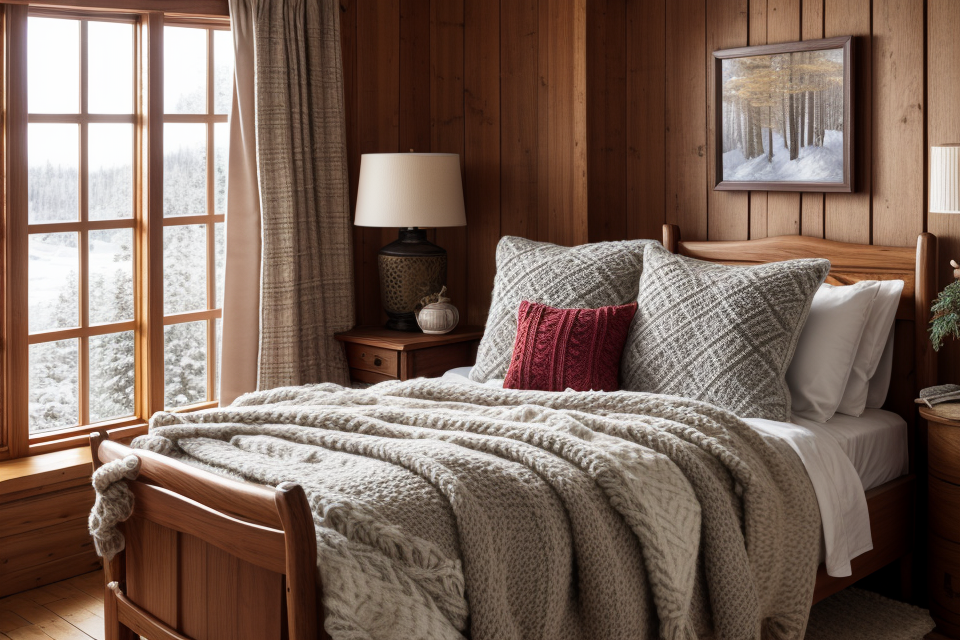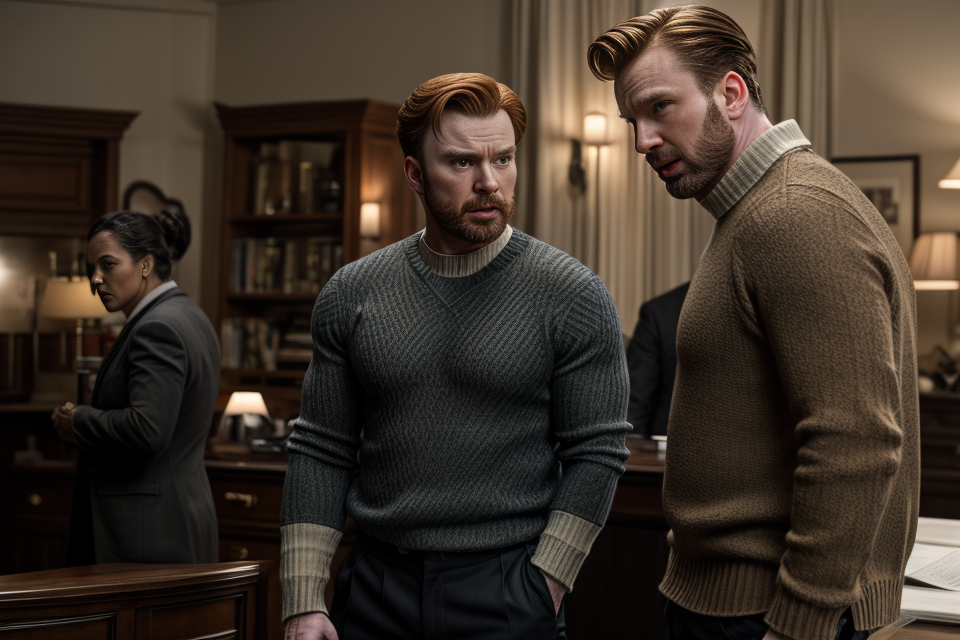A Norwegian sweater, also known as a Norwegian jumper or a Norwegian pullover, is a traditional knitted garment that originated in Norway. These sweaters are known for their distinctive design, which features a cable pattern on the front and back, and a contrasting pattern on the sleeves and neckline. The sweaters are typically made from high-quality wool, which is both warm and breathable, making them perfect for the cold Norwegian climate. The unique design of a Norwegian sweater is achieved through a combination of traditional knitting techniques and a rich cultural heritage that dates back centuries. In this article, we will explore what makes a Norwegian sweater so special and why it has become a beloved piece of clothing around the world.
Norwegian sweaters, also known as “Norwegian jumpers” or “sweater” in Norwegian, are known for their unique and recognizable design, which features intricate patterns and colorful yarns. The sweaters are traditionally made from high-quality wool, which is both warm and durable, and are often hand-knit by skilled craftsmen. The patterns on Norwegian sweaters often have a story or meaning behind them, such as depicting traditional Norwegian motifs or representing the landscape of Norway. The craftsmanship and attention to detail that goes into making each sweater is what makes it so special, and why they are cherished by those who wear them. Norwegian sweaters are also versatile and can be dressed up or down, making them a wardrobe staple.
The History of Norwegian Sweaters
The Traditional Use of Wool
Norwegian sweaters have a long and rich history that dates back centuries. One of the key factors that makes them so special is the traditional use of wool in their construction.
High-Quality Wool
The wool used to make Norwegian sweaters is of exceptional quality. It is sourced from local sheep that graze on the lush, green pastures of Norway’s rolling hills and mountains. This wool is naturally soft, warm, and durable, making it ideal for creating high-quality garments that can withstand the harsh Norwegian climate.
Traditional Techniques
In addition to using high-quality wool, Norwegian sweaters are also made using traditional techniques that have been passed down from generation to generation. These techniques involve a meticulous attention to detail, with each stitch carefully crafted to create a garment that is both functional and aesthetically pleasing.
Cable Patterns
One of the most distinctive features of Norwegian sweaters is their use of cable patterns. These intricate designs are created using a technique called “knitting in the round,” which involves knitting a tube of wool and then manipulating it to create the desired pattern. Cable patterns are not only visually appealing but also serve to provide additional insulation and warmth to the garment.
Cultural Significance
Finally, it’s worth noting that Norwegian sweaters hold significant cultural importance in Norway. They are often passed down from generation to generation and are seen as a symbol of Norwegian heritage and identity. As such, they are highly prized by Norwegians and are widely recognized as a symbol of Norwegian culture around the world.
The Evolution of the Norwegian Sweater
The evolution of the Norwegian sweater is a story of adaptation and innovation. These garments have been crafted for centuries to provide warmth and comfort in the harsh and unforgiving Norwegian climate.
The earliest Norwegian sweaters were simple and practical, made from wool and designed to provide insulation against the cold. They were typically knitted by hand, using basic stitches and patterns. As time passed, the sweaters became more complex, with intricate designs and patterns being added to the traditional styles.
One of the most significant developments in the evolution of the Norwegian sweater was the introduction of new materials. In the 19th century, synthetic fibers such as acrylic and polyester were developed, which provided a more durable and longer-lasting alternative to wool. These new materials allowed for a wider range of colors and designs, and helped to make the Norwegian sweater a fashion statement as well as a practical garment.
Another important development was the rise of the knitting machine. In the mid-20th century, knitting machines were introduced, which allowed for mass production of Norwegian sweaters. This made the garments more accessible to a wider audience, and helped to popularize the style around the world.
Despite these changes, the traditional craft of knitting Norwegian sweaters by hand has remained an important part of Norwegian culture. Many artisans continue to craft these garments using traditional techniques and patterns, ensuring that the unique character of the Norwegian sweater remains intact.
Today, the Norwegian sweater is celebrated for its unique style and quality. The garments are known for their warmth, durability, and timeless design, and continue to be a popular choice for people around the world who value craftsmanship and quality.
The Unique Features of Norwegian Sweaters
The Signature Cable Knit Pattern
Norwegian sweaters are known for their signature cable knit pattern, which is a defining characteristic that sets them apart from other types of knitwear. This distinctive pattern is achieved through a series of interlocking loops, which create a textured, layered effect that is both visually appealing and highly functional.
One of the key features of the cable knit pattern is its ability to create a warm and insulating layer of fabric, which makes Norwegian sweaters ideal for wear in cold weather conditions. The intricate cable design helps to trap warm air between the layers of fabric, providing a high level of insulation that helps to keep the wearer warm and comfortable.
The cable knit pattern is also highly versatile, and can be used to create a wide range of different designs and styles. From classic crew neck sweaters to more elaborate cardigans and pullovers, the cable knit pattern can be adapted to suit a variety of different tastes and preferences.
Another advantage of the cable knit pattern is its durability. The interlocking loops of the cable knit pattern help to prevent the fabric from stretching or becoming misshapen, which means that Norwegian sweaters can be worn for many years without losing their shape or quality.
Overall, the signature cable knit pattern is a defining characteristic of Norwegian sweaters, and is what gives them their unique look and feel. Whether you’re looking for a warm and cozy sweater to wear on a chilly winter day, or a stylish and versatile piece of knitwear to add to your wardrobe, a Norwegian sweater with a cable knit pattern is an excellent choice.
The Importance of Color and Symbolism
Norwegian sweaters are known for their distinctive use of color and symbolism. These elements are not just aesthetic choices, but they also hold deep cultural and historical significance.
Traditional Colors
Traditional Norwegian sweaters typically feature a range of natural colors, such as red, green, blue, and white. These colors are often chosen to represent the natural landscape of Norway, with its fjords, mountains, and forests.
Symbolism
The symbols used on Norwegian sweaters also have special meanings. For example, the Nordic knot symbol, or “Hringsja,” is a common design element that represents good luck and protection. The “Fylla” pattern, which consists of geometric shapes, is another popular symbol that is said to bring good fortune.
Additionally, many Norwegian sweaters feature patterns that represent different regions of the country. For instance, the “Selbu” pattern, which originates from the Selbu region in Norway, is characterized by a diamond shape with a central star. This pattern is said to represent the starry night sky over the region’s fjords.
Overall, the use of color and symbolism in Norwegian sweaters is a reflection of the country’s rich cultural heritage and its connection to the natural world. These elements are not just decorative, but they also hold deep meaning and significance for those who wear them.
The Quality of Norwegian Sweaters
The Superior Craftsmanship
Norwegian sweaters are renowned for their superior craftsmanship, which is the result of a combination of traditional techniques, high-quality materials, and a meticulous attention to detail. The superior craftsmanship of Norwegian sweaters can be attributed to several factors, including:
- Expertise of Norwegian Knitters: Norwegian knitters have a long history of creating high-quality knitwear, with many of them specializing in traditional techniques passed down through generations. The expertise of these knitters ensures that each sweater is crafted with precision and care, resulting in a garment that is not only beautiful but also durable and long-lasting.
- High-Quality Materials: Norwegian sweaters are made from high-quality materials, such as fine-quality wool, which is sourced from local sheep farms. The wool is carefully selected for its softness, warmth, and durability, ensuring that the sweater will keep its shape and color over time. Additionally, Norwegian sweaters often feature intricate patterns and designs, which are achieved through the use of high-quality yarns and threads.
- Attention to Detail: Norwegian sweaters are crafted with a meticulous attention to detail, with each stitch carefully executed to create a garment that is not only visually appealing but also comfortable to wear. The attention to detail can be seen in the intricate patterns and designs, which are created using a range of knitting techniques, including colorwork, cables, and lace.
- Traditional Techniques: Norwegian sweaters are crafted using traditional techniques, which have been passed down through generations. These techniques ensure that each sweater is crafted with a level of skill and precision that is unmatched by other knitwear. Additionally, the use of traditional techniques means that each sweater is unique, with no two sweaters exactly alike.
Overall, the superior craftsmanship of Norwegian sweaters is what sets them apart from other knitwear. The expertise of Norwegian knitters, high-quality materials, attention to detail, and traditional techniques all contribute to create garments that are not only beautiful but also long-lasting and comfortable to wear.
The Durability of Norwegian Sweaters
Norwegian sweaters are renowned for their exceptional durability, which sets them apart from other knitwear. The robust construction of these sweaters is due to several factors, including the high-quality materials used, the craftsmanship of the knitters, and the attention to detail in the design and production process.
Materials Used
One of the primary reasons why Norwegian sweaters are so durable is the selection of materials used. High-quality wool is the primary material used in the production of these sweaters. Norwegian sheep produce wool that is naturally oily, which repels water and helps keep the wearer warm and dry. The wool is also very soft and comfortable, which makes Norwegian sweaters extremely pleasant to wear. In addition to wool, some Norwegian sweaters may also include a blend of other fibers, such as cashmere or silk, to enhance their durability and comfort.
Craftsmanship
The craftsmanship of the knitters is another factor that contributes to the durability of Norwegian sweaters. Norwegian knitters are renowned for their attention to detail and their skilled techniques. Each sweater is carefully crafted by hand, with every stitch designed to provide maximum strength and longevity. The knitters pay close attention to the tension of the yarn, ensuring that the sweater is tightly knit and free from loose threads or weak points.
Design and Production Process
The design and production process of Norwegian sweaters also plays a role in their durability. The patterns and designs used in Norwegian sweaters are carefully chosen to ensure that they are not only aesthetically pleasing but also functional. The intricate patterns and stitches used in traditional Norwegian sweaters help to reinforce the fabric and prevent it from stretching or tearing. The sweaters are also carefully constructed to ensure that they fit the wearer perfectly, which reduces the risk of wear and tear.
In conclusion, the durability of Norwegian sweaters is a result of the high-quality materials used, the skilled craftsmanship of the knitters, and the attention to detail in the design and production process. These factors combine to create sweaters that are built to last and provide years of warmth and comfort.
The Comfort and Warmth of Norwegian Sweaters
The Softness of Norwegian Wool
Norwegian wool is renowned for its exceptional softness, which is a significant factor in the popularity of Norwegian sweaters. This softness is a result of several unique characteristics of the wool, including:
- Fine Fiber Diameter: The diameter of the fibers in Norwegian wool is significantly smaller than that of other wool varieties. This smaller diameter results in a softer feel and a more delicate appearance.
- Length of the Fiber: The length of the fibers in Norwegian wool is longer than average, which contributes to its softness. Longer fibers create a more smooth and uniform texture, reducing the likelihood of itchiness or roughness.
- High Fiber Twist: Norwegian wool is known for its high twist, which is the number of times the fibers are twisted together during manufacturing. This high twist creates a finer, smoother yarn that ultimately leads to a softer, more comfortable final product.
- Natural Oils: Norwegian sheep produce wool with natural oils that are not found in other wool varieties. These oils contribute to the softness of the wool by keeping it supple and preventing it from becoming dry or brittle.
- Low Grease and Dirt Retention: Norwegian wool has a low grease and dirt retention capacity, which means it remains cleaner and fresher for longer periods. This is another factor that contributes to the overall softness and comfort of Norwegian sweaters.
The combination of these characteristics results in Norwegian wool that is not only visually appealing but also exceptionally soft and comfortable to wear. This softness is a significant reason why Norwegian sweaters are so highly regarded and sought after by knitters and fashion enthusiasts alike.
The Insulating Properties of Norwegian Sweaters
Norwegian sweaters are renowned for their insulating properties, which are due to a combination of factors such as the use of high-quality wool, intricate patterns, and skilled craftsmanship. The unique design and construction of these sweaters make them exceptionally warm and comfortable, even in the harshest of weather conditions.
One of the key factors that contribute to the insulating properties of Norwegian sweaters is the type of wool used. Norwegian sheep produce a high-quality wool that is fine, lightweight, and highly insulating. This wool is known for its ability to trap air, which provides excellent insulation and keeps the wearer warm even in cold temperatures. Additionally, the wool used in Norwegian sweaters is typically sourced from small, family-owned farms, which ensures that the wool is of the highest quality and is ethically produced.
Another factor that contributes to the insulating properties of Norwegian sweaters is the intricate patterns that are often featured on the sweaters. These patterns, which can include diamonds, cable knits, and tree motifs, are not only visually appealing but also serve a functional purpose. The intricate stitching of the patterns helps to trap heat and provide additional insulation, making the sweaters even warmer.
The construction of Norwegian sweaters also plays a significant role in their insulating properties. These sweaters are typically made using a technique called “Norwegian knitting,” which involves using extra needles to create a thicker, more insulating fabric. This technique, combined with the use of high-quality wool and intricate patterns, results in a sweater that is exceptionally warm and comfortable.
Overall, the insulating properties of Norwegian sweaters are due to a combination of factors, including the use of high-quality wool, intricate patterns, and skilled craftsmanship. These sweaters are renowned for their ability to keep the wearer warm and comfortable, even in the harshest of weather conditions, making them a popular choice for those who enjoy outdoor activities in cold climates.
The Versatility of Norwegian Sweaters
The Different Styles of Norwegian Sweaters
Norwegian sweaters, also known as selburokker, are highly prized for their versatility and style. These sweaters are available in a variety of designs, each with its own unique features and characteristics. Some of the most popular styles of Norwegian sweaters include:
1. The Classic Norwegian Sweater
The classic Norwegian sweater is perhaps the most well-known style of Norwegian sweater. These sweaters are characterized by their distinctive strikkegard patterns, which are created using a strikkemølle knitting machine. The strikkegard pattern typically features a combination of diamonds, snowflakes, and other geometric shapes, while the strikkemølle knitting machine allows for the creation of intricate designs and textures.
2. The Fair Isle Sweater
The Fair Isle sweater is another popular style of Norwegian sweater. These sweaters are named after the Fair Isle, a small island located between Scotland and Norway. The Fair Isle sweater is characterized by its fairisle pattern, which features a combination of stranded knitting and colorwork. The fairisle pattern typically features a combination of animals, plants, and other natural motifs, and is often used to depict scenes from Norwegian folklore and mythology.
3. The Cable-Knit Sweater
The cable-knit sweater is a third popular style of Norwegian sweater. These sweaters are characterized by their kabelrikk pattern, which features a series of interlocking diamonds and lines. The kabelrikk pattern is created using a cable knitting machine, which allows for the creation of intricate designs and textures. The cable-knit sweater is often worn as a layering piece, and is popular among outdoor enthusiasts and skiers.
Overall, the different styles of Norwegian sweaters offer a wide range of options for knitters and wearers alike. Whether you prefer the classic look of the traditional Norwegian sweater, the intricate designs of the Fair Isle sweater, or the cozy warmth of the cable-knit sweater, there is a Norwegian sweater to suit every taste and style.
How to Wear a Norwegian Sweater
When it comes to styling a Norwegian sweater, the options are endless. These versatile pieces can be dressed up or down for any occasion. Here are some tips on how to wear a Norwegian sweater:
- Dress it up: Norwegian sweaters can be worn as a statement piece over a dress or as a layer over a blazer for a more formal look.
- Layer it: Norwegian sweaters can be layered under a coat or jacket for added warmth and style. They can also be layered over a t-shirt or blouse for a more casual look.
- Accessorize it: Pair a Norwegian sweater with a scarf, hat, or gloves for added warmth and style.
- Keep it simple: Norwegian sweaters can also be worn on their own as a simple, yet stylish, piece. They can be paired with jeans, leggings, or shorts for a casual look.
No matter how you choose to wear your Norwegian sweater, it is sure to be a standout piece in your wardrobe.
The Timeless Appeal of Norwegian Sweaters
The Iconic Status of the Norwegian Sweater
The Norwegian sweater has attained an iconic status that transcends its utilitarian purpose. Its design and construction are rooted in the traditional Norwegian culture, reflecting the country’s unique heritage and craftsmanship.
The Influence of Traditional Norwegian Knitting Techniques
Norwegian sweaters are characterized by their distinctive patterns and colors, which are the result of traditional knitting techniques passed down through generations. These techniques involve intricate stitches and textures that create unique and visually appealing designs. The use of natural materials such as wool and cotton further enhances the quality and durability of the sweater.
The Symbolism of Norwegian Sweater Designs
The patterns and motifs on Norwegian sweaters often have symbolic meanings rooted in Norwegian folklore and history. For example, the classic “fair isle” pattern is a symbol of Norway’s connection to the sea, while the “tøndermerk” (or “wrist-gusset”) pattern represents the country’s maritime heritage. These symbols add a layer of cultural significance to the sweater, making it more than just a piece of clothing.
The Versatility of Norwegian Sweaters
Another reason for the iconic status of the Norwegian sweater is its versatility. These sweaters can be worn in a variety of settings, from casual everyday wear to formal occasions. The timeless design and quality construction ensure that they remain relevant and fashionable for years to come.
In conclusion, the iconic status of the Norwegian sweater is a result of its unique design, craftsmanship, and cultural significance. It is a testament to the enduring appeal of traditional Norwegian knitting techniques and the rich cultural heritage of the country.
The Enduring Popularity of Norwegian Sweaters
The enduring popularity of Norwegian sweaters is a testament to their timeless appeal. Despite the ever-changing fashion trends, these sweaters have managed to maintain their status as a wardrobe staple. One reason for their continued popularity is their versatility. Norwegian sweaters can be dressed up or down, making them suitable for a variety of occasions. They can be worn with a suit for a formal event or with jeans for a casual outing.
Another reason for their enduring popularity is their comfort. Norwegian sweaters are made from high-quality materials, such as wool and cashmere, which are known for their warmth and softness. They are perfect for colder weather, as they can help keep you warm without making you feel too hot. In addition, they are also comfortable to wear for long periods of time, making them ideal for traveling or for wearing at work.
Finally, Norwegian sweaters are also popular because of their unique design. They feature intricate patterns and colors that are both eye-catching and stylish. These sweaters are often handmade, which means that each one is unique and can be a conversation starter. They can also be a great way to add a pop of color to an outfit or to make a statement.
Overall, the enduring popularity of Norwegian sweaters is due to their versatility, comfort, and unique design. They are a timeless fashion staple that can be enjoyed for years to come.
FAQs
1. What is a Norwegian sweater?
A Norwegian sweater, also known as a Norwegian jumper or Norwegian pullover, is a type of knitted garment that originated in Norway. It is typically made from high-quality wool, and features intricate patterns and designs.
2. What makes a Norwegian sweater so special?
Norwegian sweaters are special for a number of reasons. Firstly, they are made from high-quality wool, which makes them warm, comfortable, and durable. Additionally, the intricate patterns and designs that are used in Norwegian sweaters are unique and distinctive, and often tell a story or represent a specific part of Norwegian culture. Finally, Norwegian sweaters are often passed down from generation to generation, making them a cherished family heirloom.
3. What types of patterns are used in Norwegian sweaters?
Norwegian sweaters typically feature traditional Norwegian patterns, such as geometric shapes, flowers, and animals. These patterns are often created using a technique called stranded knitting, which involves working with multiple colors of yarn and creating texture and depth in the fabric.
4. How are Norwegian sweaters made?
Norwegian sweaters are typically made by hand using traditional knitting techniques. The wool is first spun into yarn, and then the yarn is knitted into the desired shape and pattern. Some Norwegian sweaters are also machine-made, but hand-knitting is still the most common method.
5. Can Norwegian sweaters be machine-washed?
Norwegian sweaters can be machine-washed, but it is important to use a gentle cycle and to avoid using harsh detergents or fabric softeners. It is also a good idea to air-dry Norwegian sweaters rather than using a dryer, as this will help to prevent shrinking and damage to the fibers.
6. How should Norwegian sweaters be stored?
Norwegian sweaters should be stored in a cool, dry place, such as a closet or drawer. It is important to avoid storing them in direct sunlight or in areas where they may be exposed to moisture, as this can cause damage to the wool fibers. It is also a good idea to fold Norwegian sweaters rather than hanging them, as this will help to prevent stretching and damage to the neckline.



